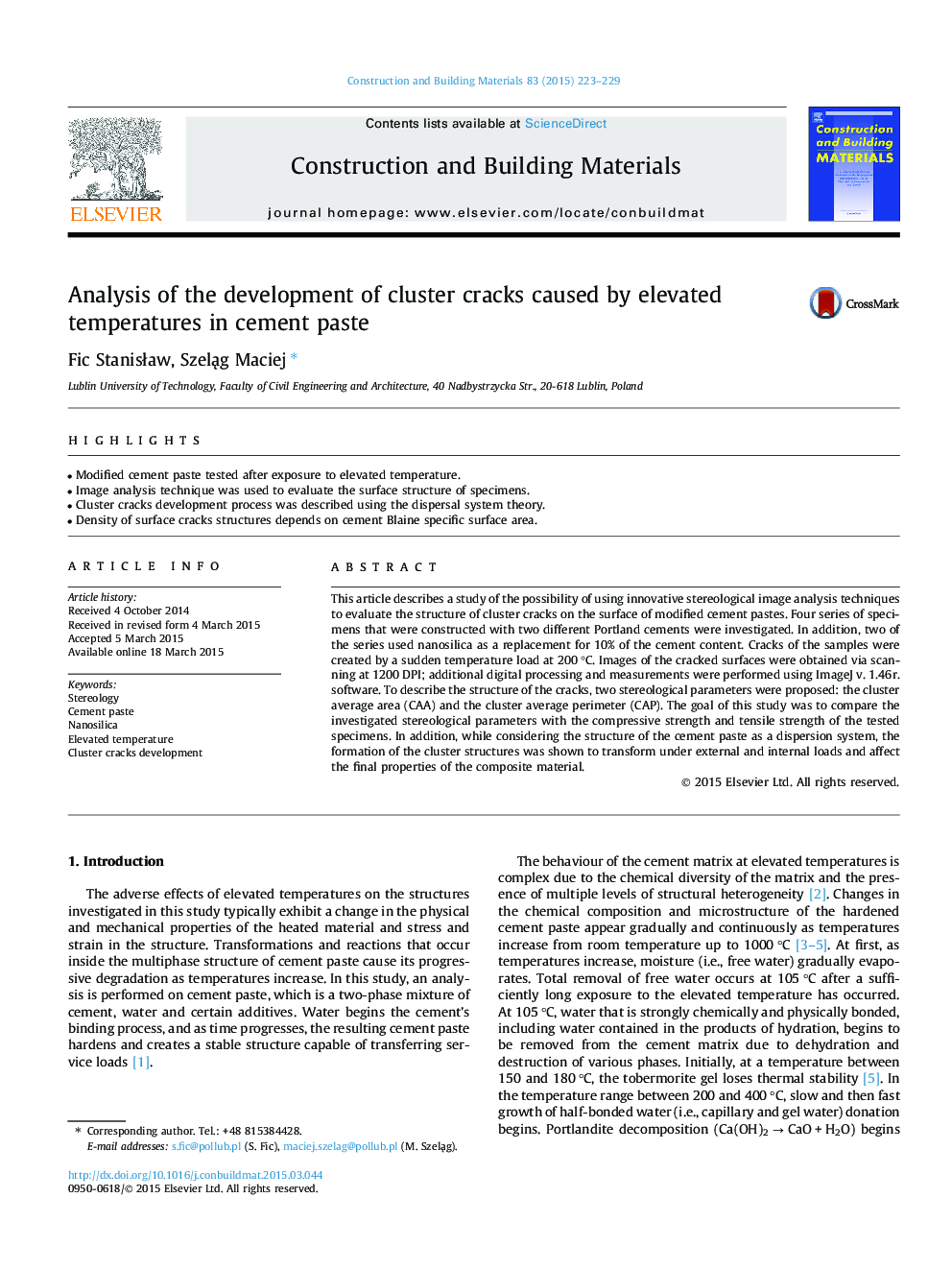| Article ID | Journal | Published Year | Pages | File Type |
|---|---|---|---|---|
| 6721012 | Construction and Building Materials | 2015 | 7 Pages |
Abstract
This article describes a study of the possibility of using innovative stereological image analysis techniques to evaluate the structure of cluster cracks on the surface of modified cement pastes. Four series of specimens that were constructed with two different Portland cements were investigated. In addition, two of the series used nanosilica as a replacement for 10% of the cement content. Cracks of the samples were created by a sudden temperature load at 200 °C. Images of the cracked surfaces were obtained via scanning at 1200 DPI; additional digital processing and measurements were performed using ImageJ v. 1.46r. software. To describe the structure of the cracks, two stereological parameters were proposed: the cluster average area (CAA) and the cluster average perimeter (CAP). The goal of this study was to compare the investigated stereological parameters with the compressive strength and tensile strength of the tested specimens. In addition, while considering the structure of the cement paste as a dispersion system, the formation of the cluster structures was shown to transform under external and internal loads and affect the final properties of the composite material.
Related Topics
Physical Sciences and Engineering
Engineering
Civil and Structural Engineering
Authors
Fic StanisÅaw, SzelÄ
g Maciej,
